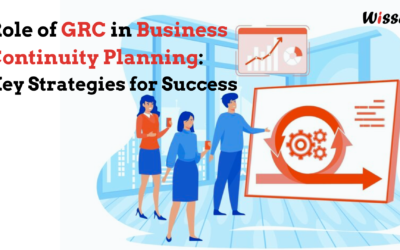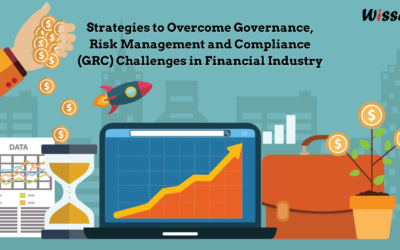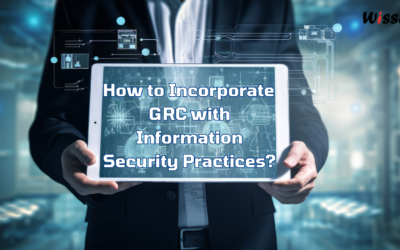A strategic approach to Governance, Risk Management, and Compliance (GRC) has become a necessity. While a strong GRC framework provides the foundation, it’s the development of a GRC-focused culture that truly sets an organization apart. This culture prioritizes risk awareness, accountability, and a commitment to ethical practices. It’s where everyone, from leadership to frontline employees, understands their role in upholding a strong GRC framework, ensuring sustainable success.
Nurturing a Culture of Excellence: Key Strategies
Building a thriving GRC culture requires a multi-pronged approach:
- Leadership Commitment and Communication:
Strong leadership is crucial for creating a GRC-focused culture. When leaders are fully committed, they communicate GRC principles clearly, ensuring everyone understands the importance of managing and mitigating risks in an organized manner. By integrating GRC into strategic goals, leaders drive significant changes across the organization. - Data-Driven Decision Making:
Use of GRC data analytics to inform strategic decisions. Invest in technologies that enable data collection, analysis, and reporting for all levels of the organization, helping leaders to make informed decision based on a comprehensive understanding of risk and compliance implications. - Agility and Adaptability:
Don’t let your GRC program become rigid. Embrace agility to navigate emerging risks and regulatory changes. Establish clear protocols for swift response to new challenges and cultivate a culture that values flexibility and quick decision-making. - Continuous Improvement:
It’s essential to regularly review your practices, find ways to improve, and make small changes over time, following a “kaizen” approach. This continuous assessment and improvement are vital for a strong GRC program. By regularly evaluating and refining processes, you can ensure that your risk management strategies are effective. Additionally, breaking down communication barriers between different parts of the organization promotes a more holistic approach to risk management. - Interconnectedness and Cross-Functional Collaboration:
Break down silos! A strong GRC culture thrives on collaboration between departments. Recognize every department as a vital node in the GRC network, promoting open communication and information sharing. - Employee Participation:
Employees are the eyes and ears of the organization. Involving them to actively contribute to GRC objectives by encouraging risk identification and ownership of compliance responsibilities. This builds a culture of GRC excellence that emerges organically from the collective efforts of the entire organization. - Continuous Learning:
Building a GRC-savvy workforce is key. Invest in ongoing training programs to ensure employees understand their roles and responsibilities within the GRC framework. Regularly review outcomes in the context of GRC metrics to enhance organizational learning and adaptability.
Building a GRC Team: Structure and Roles
An effective GRC program relies on a well-defined team structure with clear roles and responsibilities. Here’s a breakdown:
- GRC Sponsor & Senior Executives: Provide the objective, ensures GRC efforts align with strategic objectives and helps create a culture of compliance and risk awareness.
- GRC Program Manager: Leads the program, establishes governance and focuses on integration, collaboration, common nomenclature, definitions and ensures that there is alignment across functions and processes risk assessments, mitigation strategies, and communication of risk and compliance information.
- Business Unit Leaders/ Module Owners: Ensures that their modules and processes are implemented properly in the GRC framework to provide necessary insights and KRIs
- Subject Matter Experts/ Module Users: perform day to day activities and ensures that expected policies, procedures are followed
- Information Security Professionals: Safeguard organizational data, manage IT systems, and implement cybersecurity measures.
- Internal Auditors: Ensure compliance with internal policies and defined regulatory expectations, identifying areas where controls may be lacking, etc.
Do I Need to Build a GRC Team?
Whether you need a dedicated GRC team depends on your organization’s specific needs. Here are some factors to consider:
- Organization Size: Larger organizations with complex regulatory environments and a high risk profile may require a dedicated GRC team.
- Strategic Importance of Risk Management: If strong risk management is critical to your organization’s success, a dedicated GRC team can provide the necessary focus and expertise.
There are several ways to structure a GRC team:
- Centralized: A central GRC department oversees company-wide activities.
- Distributed: GRC responsibilities are embedded within each business unit, with a central team providing oversight.
- Hybrid: A central GRC team works collaboratively with representatives from each business unit.
- Outsourced: External consultants supplement internal GRC staff for specialized knowledge.
Implementing a Successful GRC Strategy
The key to a successful GRC strategy lies in integration. Here are some vital steps:
- Establish clear governance with executive oversight and regular reporting processes.
- Map internal controls and processes to relevant regulations and frameworks.
- Automate workflows for efficiency, such as control testing, policy attestations, risk surveys, and compliance audits.
- Implement GRC software to centralize data, processes, and reporting in one system.
- Build a culture of risk awareness through training and communication of GRC objectives and individual responsibilities.
- Regularly monitor KPIs, maturity metrics, and performance against defined goals for continuous improvement.
The Right Guidance for the Job
While a skilled team is crucial, technology plays a vital role in streamlining processes and promoting a GRC culture. Wissda offers a comprehensive suite of GRC solutions designed to help your organization’s risk management and compliance efforts.
Wissda’s services can strengthen your risk management program and manage regulatory obligations and operational objectives. We utilize foundational elements, a common taxonomy, and a reference model to develop customized workflows, reports, dashboards, and monitoring solutions tailored to your specific needs.
Wissda offers a range of services to support your GRC journey, including Managed Services for ongoing support, Risk and Compliance Modernization to optimize your existing processes, and Data Management and Data Analytics to unlock valuable insights from your data.






Great post. I used to be checking constantly this blog and I’m inspired!
Very helpful info specifically the remaining phase 🙂
I care for such information a lot. I was looking for this certain info for a very long time.
Thanks and best of luck.